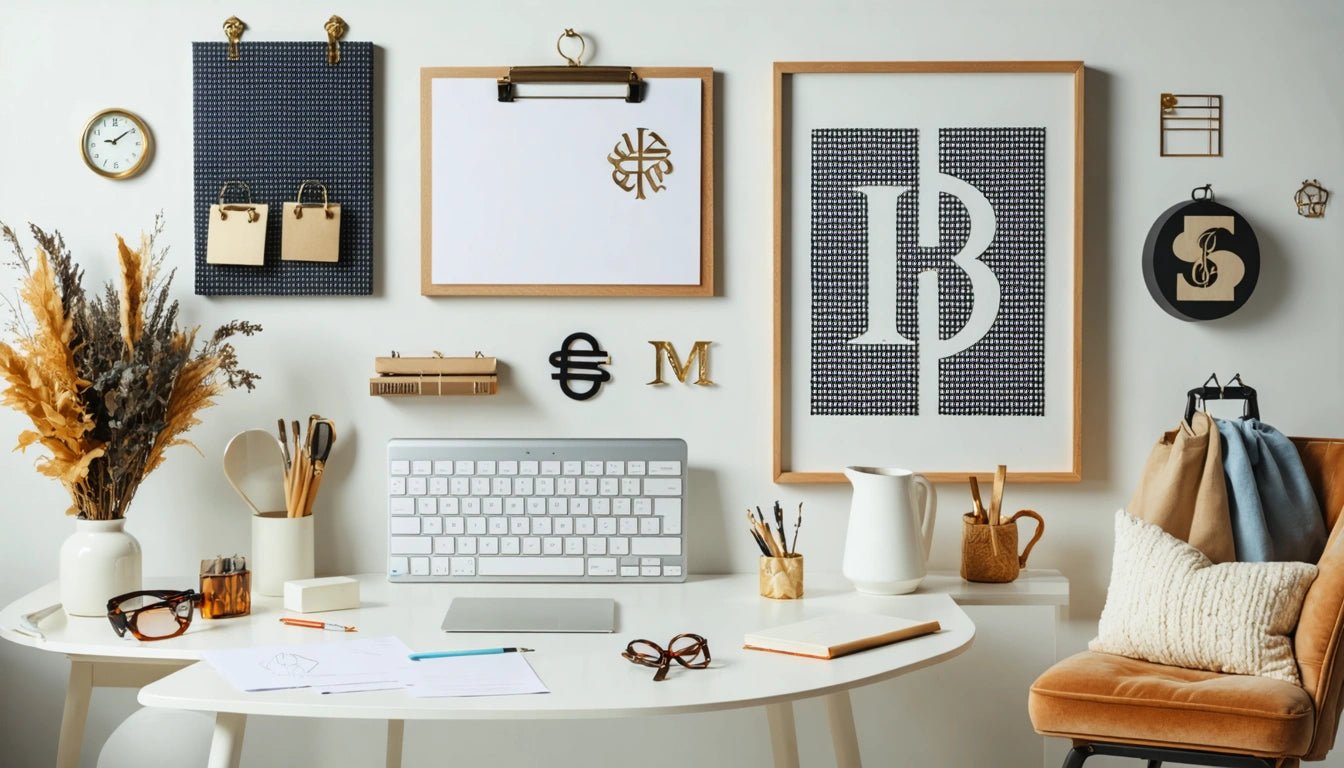Understanding Monograms: Definition, Meaning, and Usage
A monogram is a motif made by overlapping or combining two or more letters to form a single symbol. The monogram definition centers around personalization, with these designs typically featuring an individual's initials or a company's key letters arranged in a decorative pattern. Understanding what a monogram is and how it functions across different contexts helps appreciate its enduring appeal in both personal expression and commercial branding.
Monogram Definition and Origins
The word "monogram" comes from the Greek words "monos" (single) and "gramma" (letter), though modern monograms usually incorporate multiple letters. Historically, monograms served as signatures for artists, craftsmen, and rulers. What does monogram mean in a historical context? These symbols functioned as marks of authenticity, ownership, and authority.
Early examples of monograms appeared on ancient coins, where rulers would stamp their initials to legitimize currency. By the Middle Ages, monograms evolved into elaborate designs used by nobility on wax seals, much like how custom-designed accessories enhance personal experiences today. The Victorian era saw monograms reach peak popularity as symbols of refinement on personal items and correspondence.
Types of Monograms and Their Uses
Traditional Monograms
Traditional monograms follow specific formatting conventions:
- Individual monograms: Typically display first, middle, and last initials, with the last name initial larger or centered.
- Couple monograms: Often show the woman's first initial, followed by the shared last initial in the center, and the man's first initial.
- Corporate monograms: Feature key letters from the company name arranged to create a distinctive symbol.
Understanding what is monogrammed in traditional contexts helps appreciate the formality and structure behind these designs. Unlike logotypes which may include full names, monograms distill identity to its essential elements.
Modern Interpretations
Contemporary monograms have evolved beyond rigid rules, embracing creative arrangements and stylistic elements. What is monogramming today? It's a blend of tradition and personal expression, with digital platforms offering unprecedented customization options.
Creating Effective Monograms
The process of creating a monogram involves several key considerations:
Letter Selection and Arrangement
When determining what is my monogram, start by selecting the appropriate initials. For personal monograms, this typically means first, middle, and last name initials. The arrangement depends on the intended use and traditional conventions:
- First name, middle name, last name (equal size)
- First name, last name, middle name (last name larger)
- Single letter (simplified approach)
For detailed guidance on this process, this step-by-step monogram creation guide offers comprehensive instructions.
Typography and Style
The font selection significantly impacts a monogram's character. Script fonts convey elegance, while sans-serif options project modernity. The monogram definition extends to stylistic elements that enhance recognition and aesthetic appeal.
Monograms in Branding and Business Identity
What is a monogram logo? It's a condensed visual identifier that uses initials to represent a brand. Many luxury brands leverage monograms as their primary visual assets, including Louis Vuitton (LV), Chanel (CC), and Gucci (GG). These designs offer several advantages:
- Instant brand recognition
- Compact format for various applications
- Perceived prestige and heritage
- Distinctive visual ownership
Unlike comprehensive planograms that organize entire retail spaces, monogram logos focus on distilling brand essence into a minimal yet powerful mark.
Modern Applications of Monograms
The monogrammed definition extends to numerous applications across personal and commercial contexts:
Personal Uses
- Apparel and accessories (clothing, bags, wallets)
- Home goods (towels, bedding, dinnerware)
- Stationery and correspondence
- Digital signatures and social media profiles
Commercial Applications
- Product branding and packaging
- Corporate stationery and marketing materials
- Digital assets and favicon design
- Merchandise and promotional items
The versatility of monograms makes them applicable across diverse materials and contexts, from embossed leather goods to digital watermarks.
Best Practices for Monogram Implementation
To effectively use monograms, consider these guidelines:
- Maintain simplicity: Overly complex monograms lose impact and legibility.
- Ensure scalability: Monograms should work at various sizes, from small tags to large signage.
- Consider context: Adapt style to match the application's formality and purpose.
- Balance tradition and innovation: Honor conventional formats while introducing fresh elements.
- Maintain consistency: Use monograms consistently across applications to build recognition.
Understanding what is monogramming as both an art and science helps create designs that balance aesthetic appeal with functional requirements. Like other specialized design elements such as corrugated packaging structures, monograms must serve both visual and practical purposes.
Whether for personal expression or brand identity, monograms continue to offer a powerful way to distill identity into a concise, recognizable form. By understanding the monogram meaning and applying thoughtful design principles, these symbolic marks can effectively communicate individuality and status in our increasingly visual culture.



















